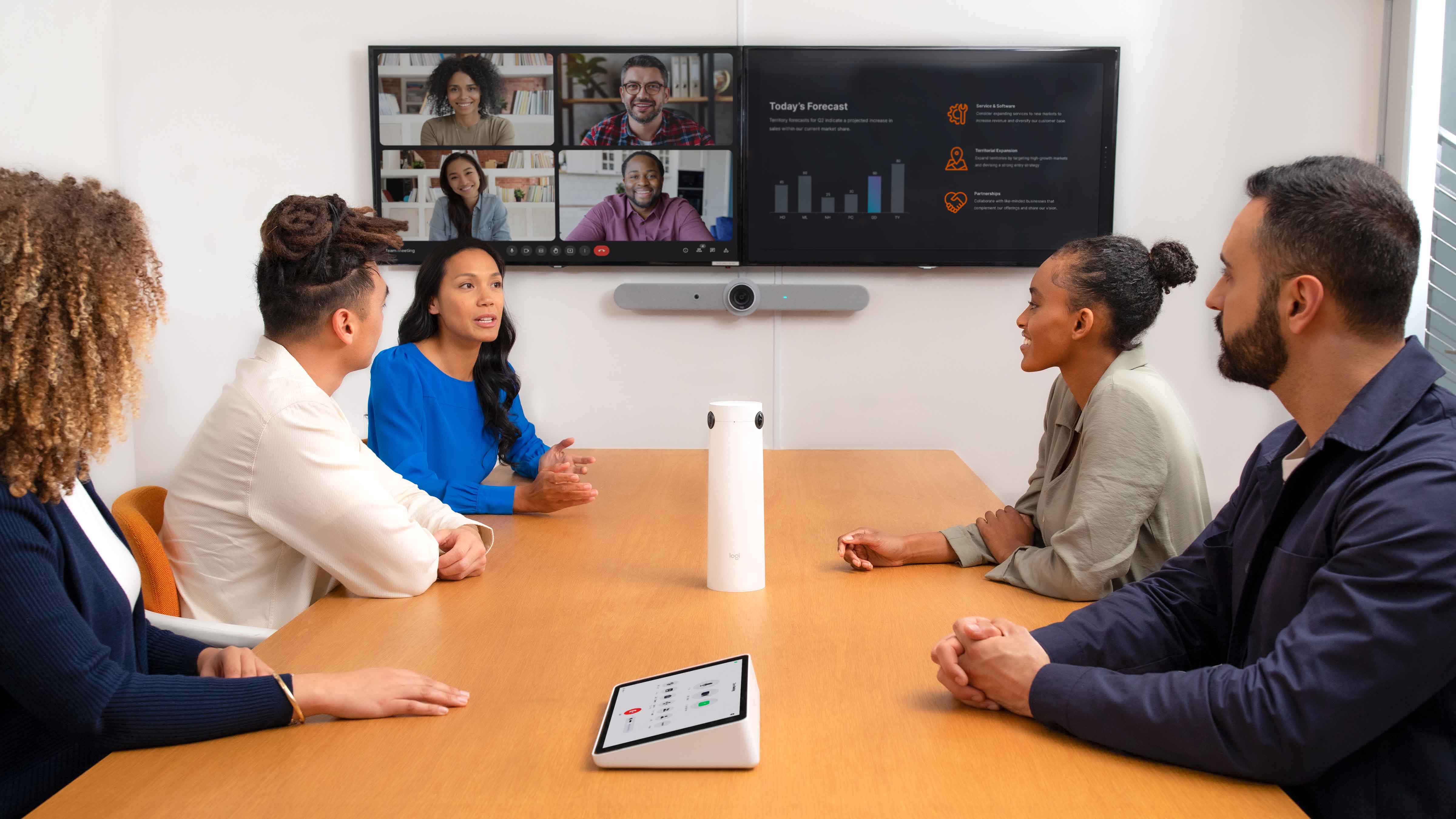Videoconferencing technologies continue to evolve, keeping pace with the needs of hybrid workplaces. Conferencing audio and video quality are more important than ever for employee satisfaction and retention, and panoramic cameras are helping to create a more equitable hybrid space.
With panoramic cameras, is more always, well, more? Not necessarily. Selecting the best solution for your space involves considering several factors.
Jeff Wilen, chief product officer at Owl Labs, offered several variables to consider, including the size and shape of the meeting space, device portability, location of power source, installation resources, desired experience for remote participants, and price.
Degrees of Participation

Perhaps most importantly, device location, and its impacts on image capture, may be the first thing to consider. “A 180-degree camera is meant to sit at the head of the meeting room and visually capture the entire conference room, from front to back,” explained Josh Blalock, chief video evangelist at Jabra.
[SCN Review: Jabra Videobar Is Built for Busy Meetings]
In contrast, 360-degree cameras are meant to be positioned in the center of the room or conference table. “From our experience and market research, 360-degree solutions offer more context and view of the full room as the camera is typically closer to its participants, allowing for a more intimate and engaging experience with remote participants,” Wilen explained.
Blalock suggested there are many factors to consider when designing a hybrid conferencing configuration. “From a use-case standpoint, meeting room environment, the shape of the space, and the desired camera angles are key factors when deciding on a camera model,” he explained. For example, a 360-degree camera may be the best solution for rooms with long tables, allowing participants to enjoy a more face-to-face experience, while a 180-degree camera can be the best choice for spaces that can be entirely seen from the front of the room.
Incorporating a 360-degree camera into a conference space provides a “complete view of the room and allows remote participants to be fully engaged and experience the most immersive version of the conversation,” said Vivek Sekar, senior director, product management at Logitech.

“The biggest and best advantages [of a 360-degree camera] are engagement and the elevated quality of the experience for the remote participants,” Wilen agreed. “Audio quality for [in-person] meeting attendees is better distributed and more natural, regardless of where participants sit in a room or space.”
“When placed in the center of a meeting space, participants at any seat are visible in high-quality, realistic images,” added Rudolf Vitti, senior project manager, Panasonic Connect North America. “Using a multi-camera setup allows for higher resolution to capture expressive details making remote participants feel truly immersed in the room itself.”
Meeting equity is a primary consideration in designing conferencing spaces, and panoramic cameras go a long way in bringing hybrid teams together. “A 360-degree camera most notably helps extend the feeling of a ‘face-to-face’ conversation into those longer rooms with long tables,” Blalock explained, “ensuring that participants towards the back of the room don’t feel disconnected from the virtual attendees.”
Working in Space

At times there can be a tradeoff between the immersive benefits of a 360-degree camera and a sense of spatial orientation. Whereas a 180-degree camera depicts the location of in-person meeting participants around a table, this can be lost with center-of-room cameras. “For remote participants, 360-degree cameras often make it harder to grasp the spatial context of where in-room participants are seated,” Sekar noted.
In some cases, an integrated front-of-room and center-of-room camera configuration may be an ideal solution, offering the best of both worlds. “This approach provides remote participants with both a view of the room and spatial context for seating arrangements and active speakers,” Sekar continued. “For those in the meeting room, remote participants appear on the front display, with their audio originating from the same location. This setup allows in-room participants to associate voices with the displayed participants, enhancing spatial awareness for everyone involved.”
Let’s not overlook installation and cabling requirements. This is important to consider when configuring a videoconferencing space. Locating a power source, connecting to other meeting room media, internet connectivity, and required cable types all need to be taken into consideration from an installation perspective.
Adding a 360-degree camera to a conferencing setup may entail integrating it with an existing front-of-room system, noted Blalock. This can create additional cost and installation complexity. A center-of-room camera may require running additional cables through the floor, and the table may need to be modified to hide those cables (for aesthetic as well as tripping purposes).
[SCN Hybrid World Review: Logitech Going Beyond Good Enough]
Specific installation requirements vary from camera to camera. For example, the Logitech Sight connects and draws power through two category cables, and it comes with built-in cable management. Other cameras, such as the Meeting Owl, may need to be physically connected to a laptop in addition to a power source. And then there's the Panasonic Connect’s PressIT 360, which only requires a single USB-C cable to connect camera, microphone, and speakers to a computer.
You may also want to consider mounting options. A 360-degree camera may include micro-suction bases, whereas tripod mounts may be an option for U or V-shaped conference tables.
AI Advantages
AI-driven features in panoramic cameras such as auto-tracking and video stitching create high-quality, immersive hybrid meeting experiences. It enables both remote and in-room participants to connect more naturally, mimicking the benefits of face-to-face exchanges.
“We know that clearly seeing someone's eyes, expressions, and gestures, as well as understanding their way of speaking, is fundamental to human interaction,” said Sekar. “Auto-tracking is crucial for hybrid meetings, providing an equitable experience for remote participants and helping them feel as if they're seated at the table with their colleagues.”

Different display modes on the PressIT 360 allow participants to select the camera layout best suited for communication, Vitti explained. Each mode offers specific benefits based on the meeting’s needs, and Sekar said that variety of display modes is "crucial to keep remote participants engaged with dynamic and relevant views of the meeting. It also gives IT teams the flexibility to easily adapt to their particular environment, whether it's Microsoft, Zoom, Google Meet, or another platform.”
Sekar also noted that the Logitech Sight utilizes on-device AI to shift between camera settings based on participants’ gaze direction, which gives remote participants a front-facing view. An additional camera mode continually shifts frame and focus to recently active speakers in the in-room conversation.
[SCN Hybrid World: Videobars Offer Simplified Conferencing Solution]
Similarly, Wilen said the Meeting Owl offers a camera mode designed specifically for presenters, which allows them to move about the room while remaining in focus. Another feature allows a key presenter to remain in frame even when they are not speaking. Blalock added that the Jabra PanaCast 50 offers the option to present an in-room whiteboard and present it as digital content, offering video participants a more immersive, collaborative experience.
Potential Panoramic Cameras
Which panoramic camera is best suited to your hybrid meeting space? Here are a few to consider.
Jabra Panacast 50
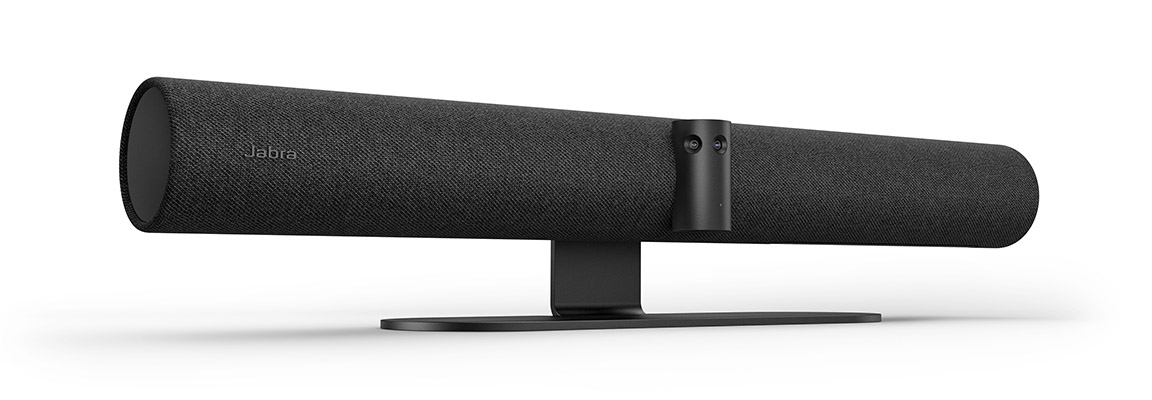
The Jabra PanaCast 50 is an intelligent 4K videobar that gives all meeting participants an equal experience. The videobar comes in a simple, plug-and-play setup, making it a future-proof video solution for small and medium-sized meeting rooms. Offering a seamless 180-degree field of view along with premium audio and an advanced system architecture, the PanaCast 50 brings remote and in-person participants into an equitable meeting experience. New AI-powered capabilities enhance the PanaCast 50, including Microsoft IntelliFrame with multiple video streams, Jabra Intelligent Meeting Space, and face and voice recognition functionality.
Logitech Sight
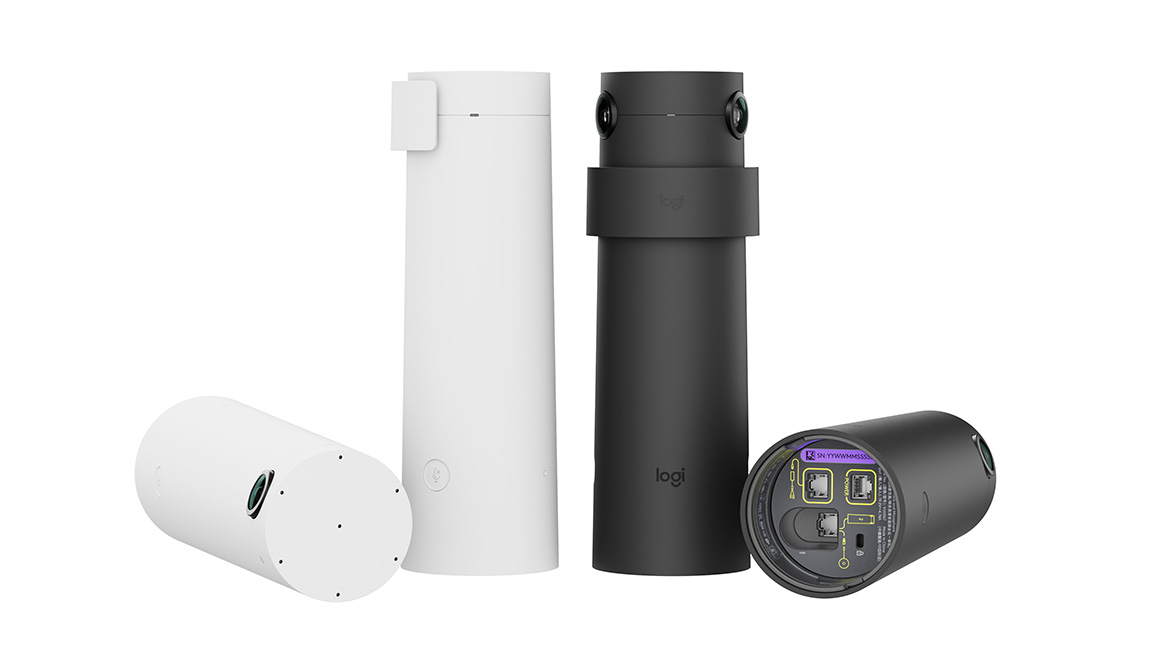
The Logitech Sight is an AI-powered tabletop companion with multi-participant framing that helps remote employees get an enhanced perspective in every hybrid meeting. It extends video and audio pickup into longer rooms and works together with the front-of-room camera to provide a front-and-center view of the room. Using video and AI to detect and accurately frame participants within a 315-degree field of view, Sight also uses sound to detect active speakers and capture audio at the table up to 7.5 feet away. And with Smart Switching, adaptive intelligence chooses the best view between the camera on the table and the camera at the front of the room, tracking conversations as they move between participants.
Owl Labs Meeting Owl 4+
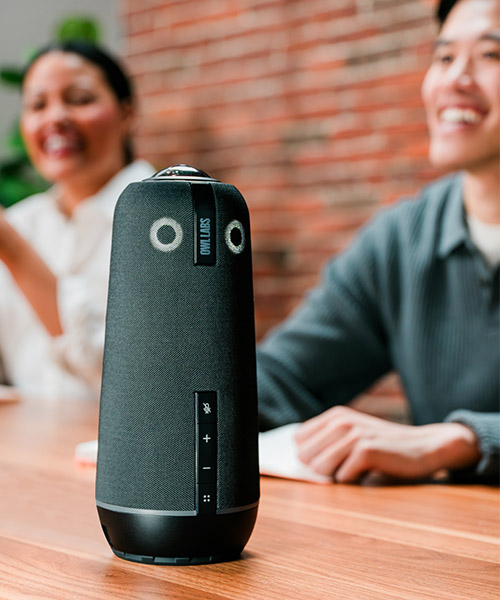
The Meeting Owl 4+ is Owl Labs’ newest all-in-one, 360-degree 4K camera, speaker, and mic device. Its proprietary Owl Intelligence System (OIS) operating system use AI and other technologies to automatically focus on speakers with smooth transitions. Teams can also customize spaces to meet evolving workplace needs. The Meeting Owl 4+ pairs with other Owl devices to cover larger spaces, carries easier fleet management for IT teams, and has more customizable lighting and sound options upon startup than previous models.
Panasonic Connect PressIT 360
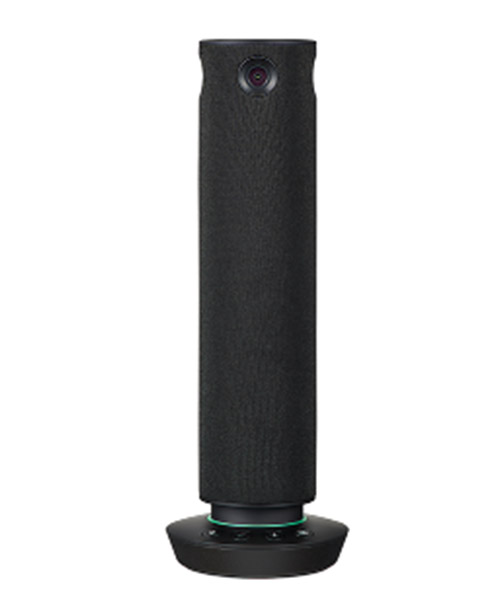
The Panasonic PressIT 360 was designed to enhance the hybrid work and learning experience. With four integrated cameras and seven microphones that offer 360-degree coverage, it ensures natural communication between in-person and virtual participants, and its portable design and flexible mounting options make it ideal for any hybrid environment. The PressIT 360 captures sessions with five different views that can be transmitted back to a PC using a single USB-C cable for quick plug-and-play setup.
